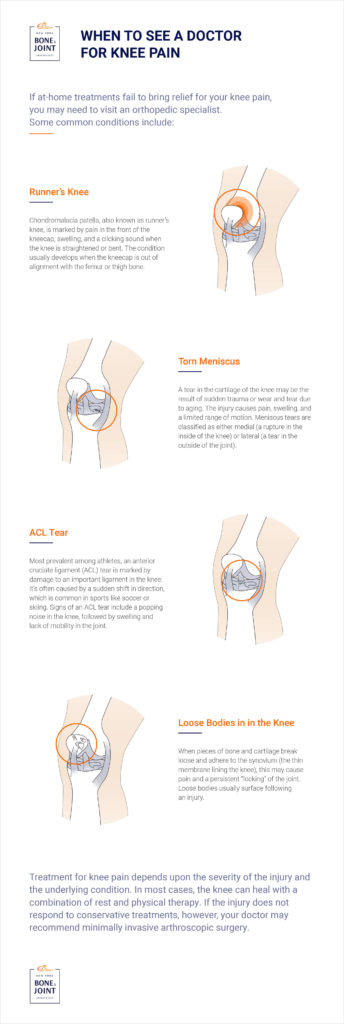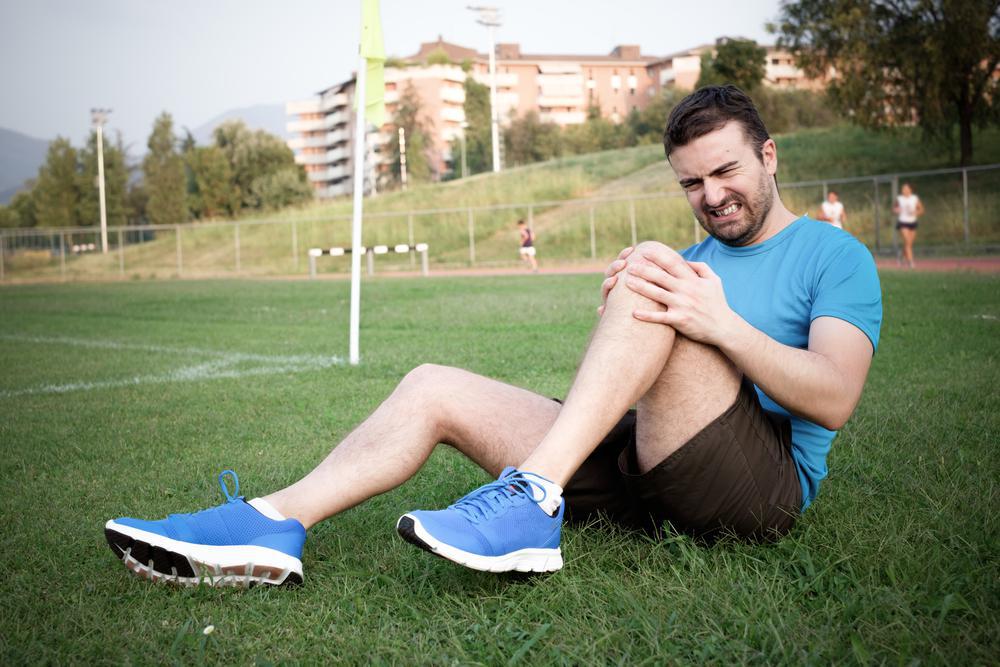Knee pain is common in athletes and patients of all ages. Our guide explains when it’s time to listen to the warning signs and see a doctor.
Knee pain can result from strenuous activity, sudden trauma to the joint, or a degenerative condition. In many cases, it resolves in a few days with the help of at-home remedies. A minor sprain, for example, can be treated with the RICE method — rest, icing, compression, and elevation. Taking over-the-counter nonsteroidal anti-inflammatory medications such as Motrin IB and Aleve can relieve knee pain as well.
If those therapies fail to bring relief or your symptoms worsen, you may need to visit an orthopedic specialist. Some signs your knee injury could be serious include:
- Severe pain
- Swelling, redness and tenderness around the knee
- A popping noise
- A grinding or clicking sensation in the knee
- Inability to bear weight on the knee and/or a general feeling of instability in the joint
- Difficulty walking
WHAT’S CAUSING MY KNEE PAIN?
If your knee pain prevents you from performing everyday tasks, it could be due to a serious injury. Some common orthopedic conditions include:
1. Runner’s Knee
Chondromalacia patella, also known as runner’s knee, is marked by pain in the front of the kneecap, swelling, and a clicking sound when the knee is straightened or bent. The condition develops when the kneecap is out of alignment with the femur or thigh bone. This misalignment can be exacerbated if you run regularly, which is how the condition gets its name.
2. Torn Meniscus
A tear in the cartilage of the knee may be the result of sudden trauma or wear and tear due to aging. Most people with meniscus tearsare between the ages of 45 and 84. The injury causes pain, swelling, and a limited range of motion. Meniscus tears are classified as either medial (a rupture in the inside of the knee) or lateral (a tear in the outside of the joint).
3. ACL Tear
Most prevalent among athletes, an anterior cruciate ligament (ACL) tear is marked by damage to an important ligament in the knee. It’s often caused by a sudden shift in direction, which is common in sports like soccer or skiing. If you’ve suffered a ACL tear, you’ll probably hear a popping noise in the knee, followed by swelling and lack of mobility in the joint
4. Loose Bodies in the Knee
When pieces of bone and cartilage break loose and adhere to the synovium (the thin membrane lining the knee), you may experience pain and a persistent “locking” of the joint. Loose bodies usually surface following an injury.

HOW TO GET RELIEF FROM KNEE PAIN
Treatment for knee pain depends upon the severity of the injury and the underlying condition. In most cases, the knee can heal with a combination of rest and rehabilitative physical therapy. If the injury does not respond to conservative treatments, however, your doctor may recommend surgery. Fortunately, today’s surgical options for knee pain use minimally invasive arthroscopic techniques that allow for a quick recovery.
An orthopedic doctor specializing in the knee can diagnose your condition and recommend the most effective treatment options. If you’re ready to get relief from knee pain, schedule an appointment today with one of the doctors at New York Bone & Joint Specialists.




